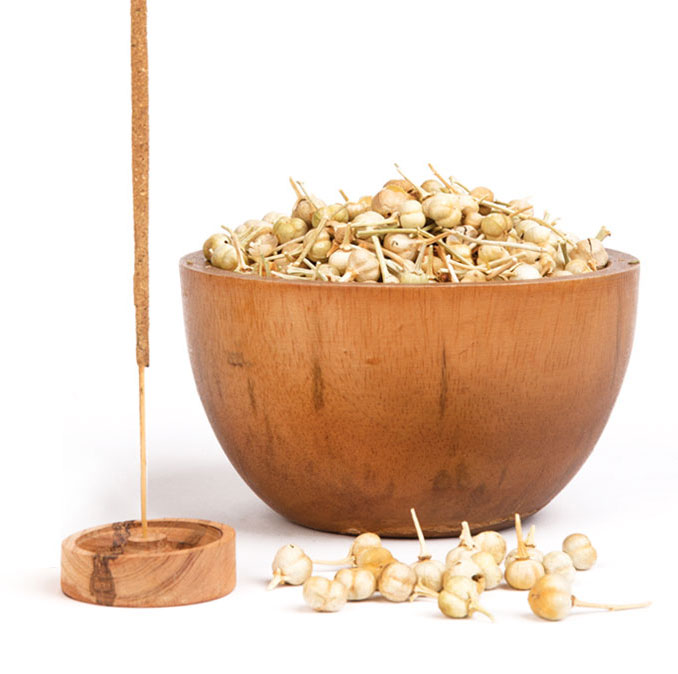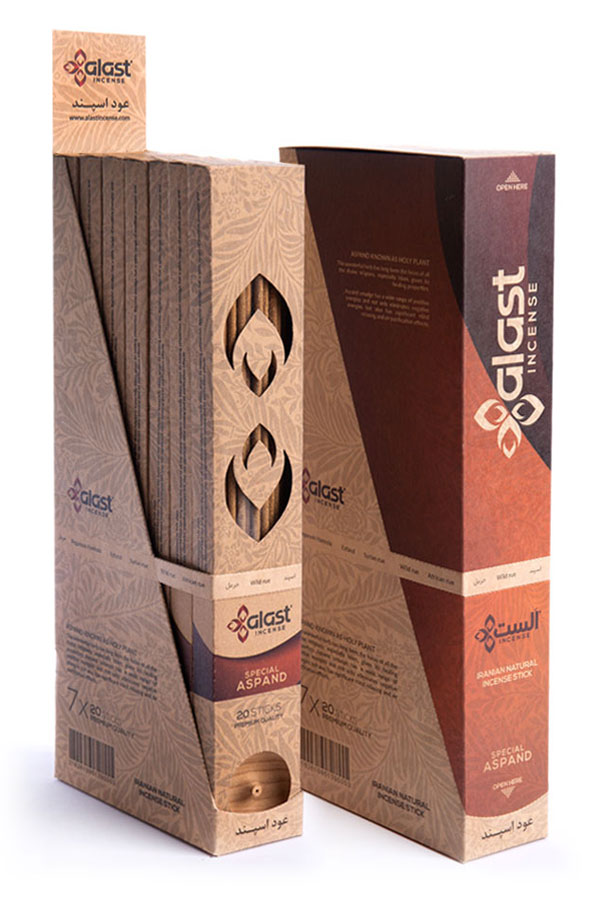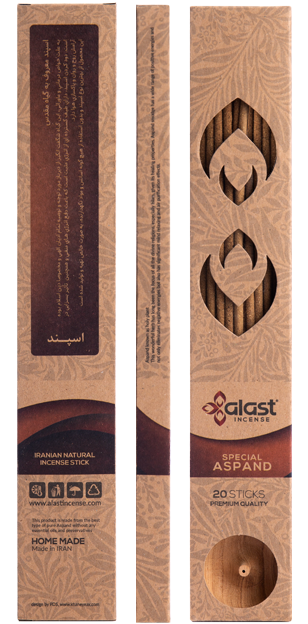About Aspand
Incense is one of the best ways to keep your room smelling lovely.
However, it has many other benefits people may not be familiar with. Here are the top 10 benefits of incense:
Holy Plant
This wonderful herb has long been the focus of all the divine religions, especially Islam, given its healing properties.
Special Features
Aspand smudge has a wide range of positive energies and not only eliminates negative energies bot also has significant mind relaxing and air purification effects.
Health Benefits
If you are having trouble sleeping at night, incense may be just as effective as sleeping pills.
Awesome Features
Special Design
The packaging design of this product is in addition to the recyclable material protection feature.
Product Includes
Each package contains 20 aspand stick and burn average 45 minutes and spary special incense.
Premium Quality
This product is made from the best type of pure Aspand without any essential oils and preservatives
Wooden Holder
The wooden unique holder contain in each package and makes it easier to use in any place.
PREMIUM QUALITY
This product is made from the best type of pure Aspand without any essential oils and preservatives.
Product Name : Alast Aspand Incense Stick
Part Number : A-133S
Dimention : 28 x 4.5 x 1.5 cm.
Quantity : 20 Sticks - length 23 cm
One Wooden Holder
Product Name : Alast Aspand Incense Stick
Part Number : A-133S
Dimention : 28 x 4.5 x 1.5 cm.
Quantity : 20 Sticks - length 23 cm
One Wooden Holder


Peganum harmala
Harmala or Syrian rue appears in the ancient literature (Dioscorides) under the name peganon. This name may have been derived from that of Pegasus, the winged horse of ancient mythology that was begotten by Poseidon, the god of the sea, and the dying Medusa. The plant has also been interpreted as the legendary magical plant known as moly and as sometimes Soma. Throughout the area once covered by the Persian empire, a type of herb seed called Aspand, Espand, or Esphand is burned on charcoal to rid one of the Evil Eye. A short verse is recited as the smoke is circled around the person's head. Aspand is also used to bring blessings after one has performed a sorrowful rite, such as attending a funeral.The seeds, which are used both medicinally and ritually, were imported from Persia to India by the Muslims at an early date. The plant was present in central Europe by the 15th century at the latest and was portrayed by the “fathers of botany”. In the Near East and North Africa, Syrian rue has retained its great significance as ritual incense into the present day.
Syrian rue (Harmala) was a sacred plant in the ancient Orient. The Koran states, “Every root, every leaf of harmel, is watched over by an angel who waits for a person to come in search of healing”. For this reason, it is said that dervishes in Buchara also esteem and ritually utilize harmel seeds.
Harmala seeds, in the form of small incense balls (sepetan), are still offered by burning great quantities during Nouruz (New Day), the ancient Iranian and now Islamicized spring and New Year’s festival. The ascending smoke is distributed throughout the entire house to keep away all misfortune. In Persia (Iran, Iraq), the seeds are scattered over glowing coals at weddings to ward off evil spirits and the evil eye. It is said that the smoke is also capable of dispelling epidemic diseases.
In North Africa, Syrian rue has been regarded as a magical and medicinal panacea since ancient times. The seeds are used as incense, both alone and in combination with other plants. The seeds are scattered over charcoal to dispel evil spirits. The smoke is inhaled to treat headaches, the consequences of the evil eye.
In the Himalayas and neighboring regions, shamans use the seeds as magical incense.
Syrian rue (Harmala) was a sacred plant in the ancient Orient. The Koran states, “Every root, every leaf of harmel, is watched over by an angel who waits for a person to come in search of healing”. For this reason, it is said that dervishes in Buchara also esteem and ritually utilize harmel seeds.
Harmala seeds, in the form of small incense balls (sepetan), are still offered by burning great quantities during Nouruz (New Day), the ancient Iranian and now Islamicized spring and New Year’s festival. The ascending smoke is distributed throughout the entire house to keep away all misfortune. In Persia (Iran, Iraq), the seeds are scattered over glowing coals at weddings to ward off evil spirits and the evil eye. It is said that the smoke is also capable of dispelling epidemic diseases.
In North Africa, Syrian rue has been regarded as a magical and medicinal panacea since ancient times. The seeds are used as incense, both alone and in combination with other plants. The seeds are scattered over charcoal to dispel evil spirits. The smoke is inhaled to treat headaches, the consequences of the evil eye.
In the Himalayas and neighboring regions, shamans use the seeds as magical incense.
Aspand is the common Persian / Dari / Farsi name for Peganum harmala, a perennial shrubby herb in the Zygophyllaceae or Caltrop family. The name is also transliterated as Espand, Esfand, and Esphand, and the plant itself is also given the regional common name Harmal or Harmala in Pakistan and India. In the USA its most common name is "Syrian Rue," a highly unfortunate monicker since although the leaves of the two plants are similar, Aspand is not related to Rue (Ruta graveolens) and it is not notable for growing in Syria, but rather in Iran, Pakistan, Afghanistan, Tajikistan, and India.
Aspand grows from one to two feet high and prefers a desert environment. It has finely divided leaves and bears small white five-petaled flowers, followed by seed capsules containing many small, brown triangular-conical seeds. In addition to its use in the Aspand ritual, the seeds of the pant are used to make a red dye and are used medicinally to alleviate certain skin diseases.
Harmala Seeds and consciousness:
Harmala seed is the richest natural source of two alkaloids, harmine and harmaline (their names come from the Indian name for the plant, Harmal). These alkaloids are members of a class of drugs called Mono Amine Oxidase Inhibitors (MAO Inhibitors or MAO-Is) that have been used in the treatment of clinical depression and, in larger doses, to produce psychotropic effects. In moderate doses, they produce a feeling of well-being and contentment. There are unpleasant side-effects to the ingestion of high doses of concentrated harmaline extracts, such as nausea and lassitude, but these effects do not occur when one breathes the smoke from burning Aspand. Among the most commonly reported psychotropic effects of harmaline and harmine are visual and auditory hallucinations, and it is commonly reported -- even by experimenters with no cultural connection to the breathing of Aspand smoke -- that these voices take the form of authoritative instructors. Perhaps the Aspand smoke stimulates some portion of the brain that evokes images of Archangels and Holy Kings and that -- combined with its anti-depressive activity -- is why it is considered a sacred plant that removes the Evil Eye.
Aspand grows from one to two feet high and prefers a desert environment. It has finely divided leaves and bears small white five-petaled flowers, followed by seed capsules containing many small, brown triangular-conical seeds. In addition to its use in the Aspand ritual, the seeds of the pant are used to make a red dye and are used medicinally to alleviate certain skin diseases.
Harmala Seeds and consciousness:
Harmala seed is the richest natural source of two alkaloids, harmine and harmaline (their names come from the Indian name for the plant, Harmal). These alkaloids are members of a class of drugs called Mono Amine Oxidase Inhibitors (MAO Inhibitors or MAO-Is) that have been used in the treatment of clinical depression and, in larger doses, to produce psychotropic effects. In moderate doses, they produce a feeling of well-being and contentment. There are unpleasant side-effects to the ingestion of high doses of concentrated harmaline extracts, such as nausea and lassitude, but these effects do not occur when one breathes the smoke from burning Aspand. Among the most commonly reported psychotropic effects of harmaline and harmine are visual and auditory hallucinations, and it is commonly reported -- even by experimenters with no cultural connection to the breathing of Aspand smoke -- that these voices take the form of authoritative instructors. Perhaps the Aspand smoke stimulates some portion of the brain that evokes images of Archangels and Holy Kings and that -- combined with its anti-depressive activity -- is why it is considered a sacred plant that removes the Evil Eye.


